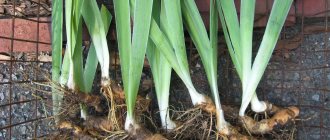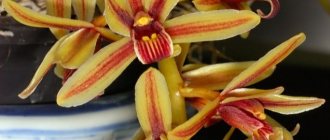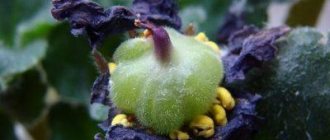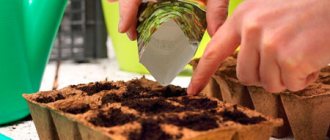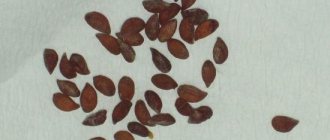Bay tree or Laurel is famous not only as a spice with many beneficial properties.
The tree is a symbol of nobility, wisdom, glory and intelligence. Even in ancient Rome and Greece, laurel wreaths were awarded to poets, winners, and those people who did a lot for their country.
Later, already in the sixth century, the plant began to be grown as an ornamental.
If pruned correctly, laurel can easily take on different shapes. For example, you can make a ball and other shapes from it.
The laurel tree grows mainly in the Mediterranean, as well as in the Caucasus and the Canary Islands.
These are evergreen small trees or shrubs. In some cases, trees can reach 16 meters in height. Life time up to 300 years.
There are only two species of the laurel genus.
The leaves are simple, on short petioles, slightly oblong.
The color is dark green, the size reaches an average of 10 cm.
The flowering period of the tree begins from April to May.
The flowers are collected in umbels of white or cream-colored inflorescences. Laurel rarely blooms indoors.
Indoor euonymus - description
Euonymus deserves attention as a houseplant because it is surprisingly unpretentious to the conditions of its maintenance. Unlike many other plants whose homeland is the southern countries (where euonymus specifically grows - you will find out below), it loves coolness, is unpretentious to the amount of sunlight, but at the same time pleases with a lush, spreading crown of the most luscious flowers: green, and red in autumn , then yellow, sometimes even white-green or even pink, like raspberry, euonymus.
What does euonymus look like, is it a shrub or tree?
This is a shrub, although some varieties are deliberately bred to look like bonsai: they have a thick central trunk with many thinner branches, so they resemble trees. An additional resemblance to a tree is given to it by a growth on the trunks, very reminiscent of bark.
Growing wild or located in an open-air yard, euonymus reaches four to ten meters in height. The crown is formed in different shapes: more lush, rounded, spreading, growing in width - this depends on the variety, as well as on the pruning carried out by the owner.
The main decoration of this shrub is its leaves. They are dense, shiny, elastic. There are different colors, both plain and variegated. In autumn they turn bright red, and then turn yellow. It looks very nice.
The second decoration of euonymuses is their berries. As a rule, they are a rich red color and also have an unusual shape: they seem to be held on the tips of the petals of the inflorescence. The flowers themselves (appear in late spring - early summer) are inconspicuous - small, faded with an unpleasant, pungent odor.
Homeland of the plant
Asian countries. They are most common in China, Japan, and Korea - where they are used for outdoor decoration of areas. Also grows in North America.
How quickly does indoor Euonymus grow?
This shrub grows slowly, which is why it requires quite rare replantings due to the fact that it “grew out of the pot.”
Potted plant height
Up to two or three meters.
Is Euonymus poisonous or not?
Yes, poisonous. Specifically, the sap of the plant is poisonous, and it comes from everywhere at once: from the leaves, branches, trunks, roots. Therefore, it is recommended to carefully ensure that your pet or child does not bite off a leaf from the bush.
It is necessary to replant the plant using gloves. They are especially necessary if you use a sharp tool - for example, when pruning a bush, when propagating it (for example, by cuttings) or caring during illness, when pruning of infected shoots is required.
The fruits are also poisonous, so if you keep it in the garden and it bears fruit, the berries should not be eaten.
Description of the plant
Laurel (Laurus) is a very interesting plant. Of course, noble laurels in natural conditions look completely different from those at home. It is an evergreen shrub, reaching up to 10 m in height. The species is long-lived, some specimens can live up to 100 years.
Scientists described the plant in 1887. This was done by Daniel Oliver, professor of botany at the University of London.
Laurel is very attractive. It has lanceolate leaves with wavy edges, shiny, pointed, dark green, up to 10 cm long, up to 3 cm wide (varieties differ in appearance and leaf color). Of course, everyone knows them - these are bay leaves that are added to broths and marinades. Laurel blooms in natural conditions - it forms beautiful yellow flowers, collected in groups of 4-6 pieces. The flowers smell good and appear in March-April. In autumn, the flowers produce dark berries.
Noble laurel (Laurus nobilis L.) is one of two representatives of the Laurel family. It is the most commonly grown plant and can be found throughout the Mediterranean. It is also found on the southern coast of Crimea, in the southwestern regions of the Krasnodar Territory, in Azerbaijan, where it grows in the form of shrubs and rather tall trees. In Ancient Greece and Rome, the heads of the winners of the games were decorated with wreaths woven from leafy laurel branches. Laurel was a symbol of glory and wisdom. Laurel leaves are a very common decorative motif.
Laurel (Laurus) in the climatic conditions of most regions of Russia, except for the southernmost ones, is suitable only for growing indoors. The plant tolerates temperatures below 0 degrees Celsius (briefly down to -10 °C), but only temporary, short-term ones. However, noble laurel can be successfully grown in an apartment. In pots, laurel bushes do not reach majestic sizes and grow short.
Laurel in the house is an evergreen shrub that grows up to 1.5 m over many years. Young laurel bushes are low, but they look good especially when formed on a trunk. They have the shape of a miniature tree with small leaves, round, very beautiful. Laurel in a pot has a pleasant smell - after crushing, the leaves smell more intense and emit a characteristic bitter aroma.
Laurel bushes grown in containers bloom very rarely. These are monoecious plants. On one bush there are male and female flowers. The flowers are not very attractive; they grow in bunches in the axils of the leaves. After possible pollination, the female flowers appear small (diameter -1.5 cm), and black fruits appear when ripe.
The dense, compact shape and the ability to prune allow you to grow laurel in pots in the form of a small bush or tree with a spherical crown. Let's find out how to grow bay leaves at home.
How to care for Euonymus at home
In order for any plant to feel good, it needs proper care; it is important to create a favorable microclimate around the plant that is suitable for it. Please note that most developmental disorders, diseases, pests appear on indoor flowers precisely because of care errors, so it is important to immediately provide the correct one.
What to do after purchase
It is advisable to immediately transplant the new green pet into a pot with soil that is suitable for these plants (you will read more about what kind of soil they need below, in the “Transplanting” section), because store-bought, so-called shipping soil, as a rule, does not have enough nutrients to ensure the plant maintains health and, especially, development.
Also, if you already have plants, it is advisable not to place euonymus right next to them. The reason for this behavior is that there may be pests on the plant that you did not notice in the store, but they will manifest themselves at home. If you immediately place the bush next to other flowers, you can infect them, and if you leave it in quarantine for a week, then at least one plant will have to be treated, and not several.
While the new pet is in quarantine, you can prepare a permanent place for it. It is advisable to first wipe it from dust, because dust is a source of infections.
Lighting
Euonymus is undemanding in terms of lighting, which makes it very convenient for growing in northern countries like Russia. He feels calm in partial shade, does not like direct sunlight, prefers moderate, diffused light. Please note that variegated varieties with patterned leaves love light more - they need it to maintain that same pattern.
Content temperature
It is also unpretentious to temperature and tolerates cold better than heat. The optimal temperature is from 18 to 25 degrees. The exception is the autumn-winter season, the dormant period. Then the temperature cannot rise above 10 degrees (if it rises, the bush will shed its leaves), and the optimal temperature is 6-8⁰C. Therefore, an uninsulated balcony or loggia is well suited for winter maintenance.
Humidity
Here the plant is also unpretentious, since it has leathery, dense leaves that absorb moisture equally well and retain it. However, it is advisable to wipe the leaves from dust from time to time, because dust prevents them from consuming oxygen, and on hot days they can be sprayed.
How to water Euonymus
Top watering is desirable; from time to time, along with watering the soil, the foliage is moistened (the reason is explained above). Regular watering is necessary, otherwise the foliage will suffer, but excess moisture from the pan must be drained from time to time.
In summer
Abundant, such that the earthen lump is completely wet. It is advisable to water the leaves along with the soil. The soil will tell you about the need for new watering: if the top layer has dried out, it means it’s time to water the plant again.
in winter
Watering is significantly reduced. Excessive watering at low temperatures will cause root rot.
Fertilizer and feeding
Optional. If you decide to feed, then this is done once a month, no more often, exclusively in spring and summer. In autumn and winter, feeding stops completely. You can use complex mineral fertilizer.
Features of care
Watering and fertilizing
During the winter holidays, water very little, and if the temperature reaches +5°C, especially lower, watering is stopped altogether.
The rest of the time, water as needed. Laurel roots love moisture, and yet this is a plant for which the principle applies: it is better to underwater than overwater. It is advisable to water with soft, or at least well-settled, water.
Laurel is a “modest” plant when it comes to supplementary nutrition. It grows slowly, can be content with relatively poor soil, and is not able to immediately absorb large doses of fertilizers. Therefore, the tree is usually fed once a month. These can be either mineral mixtures or organic solutions. It is best to alternate organics and “chemistry”. Fertilizing the laurel is always done after the plant has been previously watered with plain water.
Trimming
Anyone who has seen laurel in European parks understands: this plant is simply made for pruning! Gardeners form real works of art from its crown! When pruning laurel, you should follow a few simple rules:
- We begin to prune a young plant only in the second year of life;
- at this time it should be severely pruned, leaving a trunk no more than 15 cm high;
- after the side shoots appear en masse, each of them is also pinched, after 4-5 leaves appear on them;
- there will be even more shoots, and then the crown is given the intended shape. At home, it is most often a ball or pyramid;
- in the future, the chosen shape is maintained by trimming with pruning shears, remembering that laurel grows luxuriantly, but slowly
Important! Any pruning of laurel, especially “drastic” pruning, should be carried out at the end of winter, when the plant has not yet woken up from hibernation.
Trimming and shaping
Pruning, as a rule, is purely aesthetic in nature, but it has a good effect on the shrub: it grows more actively, the crown becomes more luxuriant. Pruning is carried out in early spring.
You just need to pluck or cut off (with a sharp, disinfected instrument, so as not to introduce any infection into the plant’s body) the leaves that are knocked out of the crown and give the bush an unkempt appearance. Also, during pruning, it is easy to form an euonymus on a trunk, that is, as if on a trunk.
Reproduction methods
To plant Laurus, it is permissible to use seeds. It is important that this is southern planting material. The seeds are first soaked in a solution of potassium permanganate. After 3–5 days they are planted in the ground.
The container with the crops must be covered with polyethylene, creating an impromptu greenhouse. They do this at the end of winter. The first shoots will appear only at the beginning of summer. After a couple of leaves appear, the sprouts are transplanted into a permanent pot. After this, they are allowed to rest for 2–3 weeks in low light.
During this period, we must not forget about watering. After which the plants can be moved to a permanent location, providing all the conditions for active growth. Laurel propagation is also carried out by dividing the bush and cuttings.
Laurel is an excellent plant to grow at home. It has a beautiful appearance, as well as tangible benefits. At the same time, the plant does not require care. It is enough to provide the flower with the necessary conditions that will not cause trouble.
Reproduction of Euonymus
Here you will learn how to propagate euonymus in different ways (for example, by cuttings in water), how to root, and how to ensure that the cuttings are successful. In two out of three cases (cuttings and root division), you will need to separate part of the plant. To do this you will need:
- Gloves, because euonymus sap is poisonous. You may get the juice on your bare fingers and then accidentally touch your eyes or put the juice in your mouth.
- Sharp knife or scissors. They must be well sharpened and also disinfected (just wipe with alcohol) so that part of the plant can be separated in one motion, without breaking or sawing off.
- Crushed activated carbon is sprinkled on the incision to prevent infection of the bush, since separating a part from the plant is always stressful for the mother plant; it will be weakened and therefore susceptible to various types of infection.
- All cuts must be made at an angle of 45 degrees - this will help the mother plant more easily grow a new shoot in this place.
Cuttings
Suitable for all varieties of euonymus. The appropriate time for cutting cuttings is June, the first half of July, when the euonymus grows luxuriantly, is healthy and cheerful. It is better if the mother plant is at least five years old.
How it's done:
- It is necessary to select a shoot that will become the future cutting. It must have at least one internode (that is, the space between two leaves), the length of the cutting is from six to ten centimeters.
- Next you need to treat the shoot with a growth stimulator, and then place it on a mixture of sand and peat.
- Cover with plastic or glass. The sprout is left in a sunny room with a fairly high temperature, since the sprout needs high humidity and warmth.
- The sprouts will take root in one and a half to two months, by autumn.
Cuttings in water are no different from usual. You can dissolve a growth stimulator in water, this will promote the rapid formation of new roots. The plant will “drink” water, so it needs to be topped up periodically. The water should be at room temperature, settled, tap water is not suitable - it contains too many substances harmful to a young, fragile plant.
Seeds
The most difficult method, usually used by professionals and for varieties of euonymus that grow on the street. If you have a domestic euonymus, then it is better not to risk it and try cuttings.
First you need to get the seeds. To do this, the euonymus must bloom. This only happens with good care and usually outside. Then insemination is carried out, that is, using a brush several times (because it may not work the first time) the pollen is transferred from the stamens to the pistils. If you succeed, seed boxes will form in place of the flowers.
When they mature, they will begin to crack. At this point you need to cut them off and get the seeds out of there. As a rule, seeds that have just been collected germinate best, but euonymus is tolerant of cold temperatures, so it is acceptable to put them in the refrigerator until better times. In this case, before planting, you need to keep them in water for two days so that they become viable again.
Seeds must be planted in soil made of sand and peat, and mulched on top (cover with mulching material to prevent the appearance of weeds: leaves, grass, bark, straw, pine needles, sawdust, cones, gravel or a special mulching cloth). In about three months, seedlings will appear. When they have formed at least two roots of their own, they can be transplanted into a separate container.
Dividing the root
The simplest method is especially suitable for dwarf varieties (they are also used for bonsai styling), because their root system grows in breadth.
It is necessary to separate a daughter sprout no more than forty centimeters high (if it is taller, it can be trimmed), with roots no less than 1-1.5 cm in diameter. The separated sprout is planted in a separate container and immediately cared for as an adult plant.
Plant propagation
Laurel propagation by seeds
The easiest way to propagate laurel is by seeds. To do this, they are bought at a flower shop, or simply brought from the southern regions, where it grows in open ground.
To grow laurel from seeds at home, you need to prepare in advance a small greenhouse with soil consisting of a mixture of leaf soil and sand. The use of peat is allowed. Before sowing, the seeds are kept for a couple of days in a slightly pink solution of potassium permanganate.
Plant the berries to a depth of about 1 cm. The substrate should be slightly moist, not wet. Cover the greenhouse with film or glass and place it in a dark place with a temperature not lower than +20°C. It is advisable that sowing occurs at the end of winter or at the beginning of spring, because laurel germinates for a long time, from 3 to 4 months. All this time it is necessary to maintain the correct level of humidity, temperature, and regularly ventilate the greenhouse.
As soon as the sprouts hatch, the film needs to be removed (you can do this gradually, over several days). Move the greenhouse to a brighter place. Planting into separate pots is done when the first pair of true leaves appears on the sprouts.
Laurel propagation by cuttings
You can propagate laurel by cuttings, but this is a more difficult path than sowing seeds. This method is used at the end of spring and in the first half of summer, using annual ripened shoots. The problem is that laurel cuttings take root very reluctantly. The rooting percentage does not exceed 30%, with roots appearing only after 2-3 months.
Laurel propagation by dividing the bush
You can successfully propagate laurel by dividing the bush. Only a strong specimen that is at least four years old is suitable for this. Each separated side branch should retain healthy roots. It is advisable to separate no more than three shoots at a time.
Attention! The division procedure is carried out only during the dormant period.
Transplanting Eonimus indoors
Here you will learn how, when and why to replant euonymus.
Why is euonymus transplanted?
- After purchase, because the store-bought soil does not meet the needs of the shrub, the euonymus will not live in it for long - it will begin to hurt;
- Most often, replanting is planned, annual: because the pot has become small, as the plant develops;
- Another reason is sanitary: if a shrub is infected by pests, it is often recommended to replant it just in case to avoid re-infection through the soil.
Sequence of actions during transplantation:
- Euonymus is poisonous, so it is recommended to wear gloves.
- You need to prepare a new pot and soil (you will read below how to choose) so that it is immediately at hand.
- Place one or two centimeters of drainage and some soil mixture at the bottom of the new pot.
- Carefully remove the shrub from the old pot. Inspect it just in case: often, just during transplantation, closely examining the roots, the lower part of the plant, which is usually not so clearly visible, the owners notice pests. If you notice them, then it makes sense to return the euonymus to its place and first carry out measures to destroy the pests, and only then replant it in new soil.
- If everything is in order, then carefully place your green pet in the center of the not completely filled pot and fill in the remaining soil so that there are no air spaces left.
When can you replant?
A young plant (up to 5 years old) grows quickly, so it requires annual replanting. After five years, replanting is required only when necessary: when the root system has “grown” out of the pot (this is noticeable by the fact that the roots begin to protrude from the ground, as if trying to crawl out of the pot). Without a clearly expressed need, it is not worth replanting the euonymus, disturbing it once again. Typically, replanting is required from once a year to once every three years, it depends on the growth rate of the shrub.
A good time for replanting is early spring, when the euonymus is full of strength and ready to endure such stress. The exception is if the transplant is carried out for treatment purposes, then the season does not matter.
Priming
To make a soil mixture for euonymus, turf soil, peat and sand are used. Ratio of parts: six parts turf soil, two parts sand, one part peat. Sand can be replaced with humus and leaf soil can be added. Then the soil mixture will consist of one part of leaf soil, two parts of turf and one part of peat and humus each.
Place drainage at the bottom of the pot - crushed brick or expanded clay (special pebbles, you can buy at a plant store), since euonymus does not tolerate waterlogging.
What kind of pot is needed for euonymus
There are no special rules in choosing a pot; any pot will do, the main thing is that the root system of your shrub fits in it, and there is about one centimeter left between the roots and the walls of the pot.
Laurel transplant
Laurel is a slow-growing plant and has small roots. Sometimes you are surprised how a fairly large specimen feels good in a disproportionately small pot. Therefore, even young plants are replanted once every two years, and older ones even once every 3-4 years. In this case, the new pot should be only 2-3 cm larger in diameter than the previous one.
Important! Remember each time what soil you planted your pet in. You might even want to write this information down somewhere. It is advisable that the transplant be carried out in approximately the same soil - laurel does not like it when the properties of its usual soil have changed.
If your laurel is already mature and replanting is not done often, change the top layer of soil in the pot every spring. It is desirable that humus be present in this layer. In this case, the plant can not be fed for 2-3 months.
Diseases and pests of Euonymus and their treatment
In general, euonymus is a healthy plant with a strong immune system, if you can say that about plants, so it doesn’t have many diseases. It suffers more from pests, but pests most often appear by accident: for example, they fly from other plants or appear in contaminated soil. A favorable environment for most pests is dry and too warm air, for example, if the euonymus stands near heating devices.
Pests of euonymus
- Shields
Symptoms of appearance: leaves turn pale, dry, then fall off. Plus, you'll notice the insects themselves: tiny brown bugs with round, shiny backs.
What to do: mix any medicine containing actellik with water and treat the plant (preferably several times with breaks of a week, because scale insects are called scale insects because they have plates on their backs that protect against poisons), then cut off the damaged shoots . It is important to do this as soon as you notice scale insects, because otherwise they will multiply and the plant will no longer be saved.
- Spider mite
Symptoms of appearance: a thin, light, white coating on the lower parts of the plant, reminiscent of a cobweb. Then the leaves gradually wither, dry out and fall off.
What to do: rinse the plant under running water (the pressure should not be strong, otherwise you will damage the euonymus crown) using a soft washcloth or cloth. Then use actellik.
- Red flat tick
Symptoms: light spots on the leaves, damaged, painful appearance of the shoots.
What to do: treat with insecticide. As a rule, several treatments are required with a break of 7-10 days.
- Mole
Symptoms: The moth is visually noticeable: it is a silvery small butterfly whose wings are covered with black dots. The larvae are small, yellow-green in color. She lays eggs and the larvae eat the plant. There is also a symptom that allows you to determine that moth eggs are laid on the bark of the euonymus: the trunk is covered with a brown sticky substance.
What to do: physically remove eggs and everything associated with moths from the bush, then treat with a moth preparation.
- Aphid
Symptoms: leaves turn yellow, then curl and then fall off. This is due to the fact that aphids feed on their sap.
What to do: treat with aphids. It is recommended to do this on a regular basis for prevention purposes, because aphids are one of the most common pests of euonymus.
- Flat tick
Symptoms: deformation of leaves, white spots on them.
What to do: remove damaged shoots, treat with insecticides.
Euonymus diseases
- Drying branches
This disease is caused by a fungus, and most fungi appear in conditions of high humidity, so if your euonymus begins to show symptoms of drying out branches, you are probably overwatering it, or it is standing in an overly humid room.
Symptoms: necrosis of the bark of bush branches, then drying out and cracking. If the disease is allowed to spread, the fungus will produce spores (in cracks in the bark) and can infect other plants nearby.
What to do: treat with Bordeaux mixture, spray with preparations that contain copper, remove damaged shoots. All actions must be taken immediately, before the fungus has time to develop and produce spores.
- Ascochyta blotch
Symptoms: Brown, rust-like spots on the underside and top of the leaf. Over time, they turn white, only the edges of the leaves remain rusty.
What to do: remove damaged shoots, treat with Bordeaux mixture.
Most diseases develop in the fall, so in order to prevent them, it is important to carry out preventive measures in the summer: regularly treat the euonymus with Bordeaux mixture. It is also important to ensure that all rules for caring for the shrub are followed, since most often it gets sick when some care recommendations are not followed.
How to choose and are there fakes?
Bay leaves, shiny and dark green when fresh, become light olive green with a silvery tint when dried. Bay leaf is traditionally harvested from October to February. It is at this time that the spicy foliage contains the maximum concentration of essential oils.
The spice is always available in stores and is usually sold in paper packaging. It is almost impossible to determine what is inside - it is a “pig in a poke”. According to Soviet GOST, there should be no more than 8% of broken leaves in the package. This can still be determined by touch. And, of course, you shouldn’t buy solid scrap.
There is another misfortune on the market: instead of laurel, you can buy cherry laurel. This fake is a laurel-like evergreen plant from the Rosaceae family. Its fresh leaves contain hydrocyanic acid derivatives (cyanides) and are poisonous, but don't worry - you won't chew them raw, will you? Moreover, when heated, cyanide decomposes into harmless substances. But the main thing is that cherry laurel contains several times less essential oil than laurel, so it will practically not improve the taste of the dish.
Cherries pickled with bay leaves (recipe here)
To avoid making a mistake at the market and buying a fake, rub the leaf in your hand and smell it - laurel has a strong and bright aroma, while cherry laurel has almost no smell. In addition, cherry bay leaves often have a reddish tint. And also - the fresher the laurel branch, the richer the taste and aroma will be.
If you bought the spice in a store, remove the leaves from the packaging, select the whole ones and put them in a glass jar. If you brought fresh laurel from the market, pick them off the branches and place them between the pages of some impressive publication. When the leaves are dry, do the same. The properties of laurel packaged in this way are preserved for up to a year. So don't forget to put a note inside the jar with the date you got it.
Try growing bay laurel on your windowsill. It's possible!
Sturgeon aspic prepared using bay leaves (recipe here)
Popular varieties of indoor Euonymus with photo and name
Due to the fact that euonymus is poisonous, it is bred mainly solely for its decorative qualities, so breeders are trying to develop more and more new varieties with a bright and beautiful crown. We have collected the most popular ones.
Winged
One of the most common, popular varieties. In autumn, this bright red-leaved bush, with a color reminiscent of raspberries or wine, immediately attracts attention and catches the eye from afar.
Fortune (Euonymus fortunei)
A variety with bicolor leaves: in summer they are dark green in the center, bordered by a wide white stripe along the edges, and in autumn the white stripe turns yellow, making the leaves almost golden.
Japanese Ecstasy
A miniature variety, the bush stretches upward, which distinguishes it from other, more spreading brethren. There is a dark green stripe in the center of the leaves, and the leaves themselves are bright gold, lemon, juicy in color.
Japanese Bravo
Very similar to “Fortune”, but the dark green part of the leaf blades is wider and the light border is smaller, but the leaves grow very densely, which is why the bush appears white from a distance.
Dwarf
The smallest variety, very different from its counterparts: the leaves are thinner, elongated, reminiscent of fern leaves, dark purple in autumn, bright green in summer.
Cherry laurel as a houseplant
Cherry laurel is not laurel.
Cherry laurel differs from laurel in that, although its leaves are the same in appearance, its leaves do not have the characteristic laurel aroma. But it becomes fragrant when it blooms! This plant is used for landscaping in warm climates, but in harsh climates it can be grown as a houseplant. The leaves are similar to laurel leaves, and the fruits are similar to cherries, hence the name. Cherry laurel (Laurocerasus) is a genus of evergreen trees or shrubs of the Rosaceae family. In indoor conditions, cherry laurel rarely grows above 1.5 m. The fruits are used for food, fresh or dried.
Cherry laurel (Laurocerasus officinalis) is commonly grown as a houseplant.
- a perennial evergreen shrub that grows to a house height of no more than 1-1.5 m. The leaves are leathery, serrated, dark green.
The flowers are white, small, very fragrant. It blooms in April-May and begins to bear fruit at the age of 4-5 years. The fruit is a juicy, sweet drupe, reminiscent of a cherry, while the fruits are edible and even very tasty
.
You can make compotes and jam from them. But the seeds are inedible (they contain small amounts of hydrocyanic acid). Cherry laurel honey is poisonous. Cherry laurel is remarkable for its undemanding nature, can be easily shaped by pruning, is shade-tolerant, and grows well in dimly lit rooms, even in corridors and on landings.
For more abundant fruiting, however, a more illuminated place is required. It is frost-resistant, will winter well on an insulated loggia, and in the summer it is recommended to take it out into the air. In winter, watering is moderate, once every 1.5-2 weeks (water so as not to let the soil dry out).
At high temperatures, it is recommended to spray the plant with water 1-2 times a day.
Cherry laurel requires light, nutritious soil; a slightly acidic universal flower soil (for example, Saintpaulia or Begonia) is suitable. Transplant every year before reaching the age of five, then once every 2-3 years.
Fertilize no more than once a month, less often is better; universal fertilizers for indoor plants are suitable.
Cherry laurel propagates by seeds; It is not easy to propagate it by cuttings and layering (although it is possible). Seeds are sown immediately after ripening; they lose their viability during storage. Shoots can appear within three months.
Cherry laurel can be attacked by scale insects and scale insects, but in general it is resistant to diseases and pests.
Is it possible to keep Euonymus at home: signs and superstitions
Euonymus not so long ago became known as a houseplant and spread around the world (previously it was popular only in Asian countries - China, Japan, Korea - as an element of landscape design), so it has not yet acquired signs and superstitions, after all, for this it takes a certain amount of time. In Asian countries, euonymus was most often grown outside, outside the home, and there were no special rules associated specifically with euonymus: general rules for arranging plants according to Feng Shui were used, not related to a specific genus of plants.
But it is known that from Latin the name “euonymus” is translated as “glorious, good.” It is also sometimes called pseudo-laurel, and laurel is associated with the victories and successes of Roman commanders, who were crowned with a laurel wreath for great achievements. Therefore, it can be assumed that the euonymus has warm energy, it attracts good luck into the house and protects its owners from troubles. Or, at least, it just pleases with bright greenery.
There are several legends about how the euonymus appeared.
According to the first, it appeared thanks to the ancient Greek goddess of plants, Flora. One day she was walking through the forest, and suddenly she lost her earring and pendant. The goddess became angry at the wayward decorations and ordered them to become poisonous plants. This is how the euonymus appeared: its leaves are shaped like the pendant of a beautiful goddess, and the berries resemble her earring.
According to another legend, the euonymus was created by an evil witch as a punishment for people who had deeply offended her in some way. Later, the witch repented of her evil deed and ordered the euonymus to be not only poisonous, but also a medicinal plant (sometimes decoctions of euonymus leaves are used as a folk medicine against migraines, but this is a dangerous undertaking!). However, the witch was so exhausted by these transformations that she herself turned into a gray bird and began to flutter around the euonymus, feeding on its fruits.
According to the third legend, the euonymus and that same gray bird are lovers who were separated during life, but united after death.
Where do bay leaves grow?
Bay leaves or, as housewives affectionately call them, “laurel” are the leaves of an evergreen shrub, a relative of the camphor tree, avocado and Ceylon cinnamon, from which cinnamon is extracted. Thanks to essential oils, laurel leaves have a powerful aroma and recognizable taste, which become richer as the plant ages.
The word “laurel” itself is Latin and means “praise.” The Greek name for the plant is “daphne”, in honor of the nymph who, not responding to Apollo’s love, chose to turn into a tree. Laurel leaves probably came to us from Byzantium, and until the 18th century, laurel in Russia was called “daphnia” in the Greek manner.
From the name of this plant - “laurel” - came the names Lavrenty and Laura, the words “laureate” and “bachelor”, the expressions “laurel wreath”, “rest on laurels” and “reap laurels”.
Potatoes in sour cream, cooked with bay leaves (recipe here)
Photos in the interior
Medicinal properties
Cherry laurel has medicinal properties: cherry laurel water is obtained from the leaves, which helps with diseases of the cardiovascular system and as a pain reliever. The leaves of the plant contain essential oil, which includes benzaldehyde, hydrocyanic acid, benzyl alcohol, triterpenoids, and ursolic acid. Amygdalin breaks down in the intestines, releasing hydrocyanic acid, which has an anesthetic effect.
In homeopathy, cherry laurel leaves are used to treat epilepsy, tuberculosis and whooping cough.
If you take cherry laurel leaves in equal proportions with eucalyptus, myrtle and laurel (you can add valerian), and keep a bag with them near your pillow, you will get an excellent natural sleeping pill.
And, as we said above, cherry laurel has very tasty fruits! Which also ripen indoors.
Description of laurel tree
Laurel is an evergreen tree or shrub. In nature, it is capable of reaching 6-15 meters. The bark of the trunk is brown, glossy, and the shoots remain bare. The crown of the tree has dense foliage and grows in the shape of a pyramid.
Leaves
The leaves are alternate, have short petioles, and leathery. Their length reaches a maximum of 20 cm, and their width up to 8 cm. The leaf blades are simple, lanceolate-oblong in shape, pointed at the tips. The upper part of the leaf is dark green, while the lower part is a lighter shade. The leaves are simple, bare, and have a special spicy aroma. The edges of the leaves are slightly wavy, but solid.
Flower
This plant is dioecious, the flowers are yellowish-white. They gather in many umbrella-shaped axillary inflorescences. They are collected mostly at the tips of branches, 1-3 pieces each. Before flowering, the umbrellas are enclosed in spherical wrappers that consist of 4 elliptical scales.
The flowers are small, unisexual. Flowers with stamens are collected in “groups” of 6-12 pieces, and those with pistils are even smaller in size and are collected in groups of 2-3 pieces. The plant is almost never monoecious.
Fruit
After the end of the flowering period, blue-black drupes begin to form, their shape is oval, and their length is up to 2 cm. The stone is quite large, the berries ripen by October-November. All parts of the bush can boast of containing essential oils and other beneficial substances.
The percentage of useful and fragrant oil in the leaves is 3-5.5%, in berries – up to 1%.
In addition, bay fruits contain 24-45% starch, fatty oil, mucus, phytosterol, lauran hydrocarbon, and sugars. Bay oil is rich in the following components:
Description
Laurel is a tree or bush that remains green all year round. Young laurel can also be grown in hot weather; it is an unpretentious and resilient plant.
Laurel is a plant that will always delight your eye with its appearance; its flowers form inflorescences in the form of umbrellas.
Types of laurel
Laurel is a plant that has a large number of different species; as we indicated at the beginning of the article, there are more than forty species of laurel. But now I will list only the most popular types:
- Noble laurel
- camphor laurel
- Azores laurel
The most common of the listed species is the noble laurel . It is also widely used in preparing various dishes. This species is also common in Russia. The places where you can find the noble laurel in Russia are the Krasnodar region.
The noble laurel shrub does not grow more than 10 meters, but there are trees that reach up to 18 meters in height. The trunk has a characteristic brown color, rather dark brown, and the diameter is approximately forty centimeters.
Application of the plant
As I said just above, laurel is used in cooking, or rather bay leaves are used. The leaves have a bitter taste, and the smell is not so expressive, but it is still there. Laurel fruits are also used in cooking; usually the leaves and fruits are dried, and powder is often made from the leaves. Add elements of dried bay leaves or fruits to soups and sauces.
Beneficial features
As we said earlier, laurel is widely used in cooking due to its spicy and unusual taste. It has another advantage, which lies in a number of its positive qualities.
It’s not for nothing that laurel is called a noble plant. But before I tell you about the beneficial properties, let's first tell you about the contraindications, and who should not use bay leaves.
The leaves of this plant are contraindicated in dried form or in dishes, or in infusion, which is not so important: for pregnant women, nursing mothers, as well as for children who have not yet turned five years old.
If you have urolithiasis, or you suffer from chronic diseases such as acute kidney failure, then laurel is also contraindicated for you.
We are done with contraindications, now we can talk about the beneficial properties of this plant. In medicine, an ointment was obtained from it, or rather from its fruits, which was called bean ointment. Laurel oil is considered a cosmetic product and is sold in almost any pharmacy.
Unfortunately, now it is no longer considered a medicinal plant, but nevertheless it has found its use in cosmetology and cooking.
The composition of the laurel includes:
- Essential oils (laurel is considered a plant rich in essential oils, its amount is up to 5% in the leaves. Its fruits contain 1% oil, which is also quite a lot);
- Bitterness;
- Resin;
- Tannins;
- Vitamins (Vitamins contained in leaves and fruits are: B, A, C, PP);
- Microelements (Bay laurel is also rich in various microelements, which include: calcium and magnesium);
- Acids (The leaves of our miracle plant contain acids such as: valeric, acetic, and of course nylon);
- Fatty oil, starch and phytosterol are contained in the fruits (At the same time, the amount of fatty oil in laurel fruits reaches 45%).
Essential oils are known to help relieve pain, and laurel has been scientifically proven to serve as a pain reliever. The plant is a good remedy for burns. This is a magnificent plant. It is used in various industries. It is truly worthy of the name “Noble Laurel”.
Shrub varieties
Canarian (Azorean)
The maximum grows up to 15 meters, and is distinguished by the pubescence of its shoots. Lives in the Canaries and Azores. The leaves are rich green in color and have an oval shape. They reach a length of 15 cm and a width of up to 6-8 cm. Flowering occurs with umbrella-shaped flowers of a yellowish tint. They grow from the axils of the leaves in small groups. The flowering period is from late spring to summer.
Noble
Reaches a maximum of 6 meters. Its leaves are up to 20 cm long and reach 8 cm wide. They are velvety to the touch, pointed at the tips. The plant blooms with yellowish flowers in umbrella-like groups of 2 in the leaf axils. Flowering begins in late spring.
Laurel: description, types and cultivation. Home care and beneficial properties
Almost every plant belongs to some family. Surely everyone has heard about the laurel family. Today we will talk about a plant called Laurel. This is an aristocrat among trees, he is considered a noble tree. It is worth noting that it is widely used in cooking in different countries.
Laurel is another plant that came to us from the Mediterranean. Nowadays it is very fashionable to grow it at home. At the moment, more than forty species of it are known to humanity.
Laurel is mentioned in ancient Greek legends, and more specifically the legend of Daphne and Apollo. It is believed that its branches help people see prophetic dreams. The laurel symbolizes glory and is considered a holy tree.


